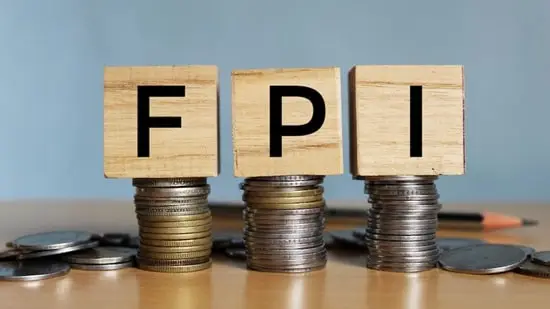The Indian equity market has witnessed a remarkable surge in Foreign Portfolio Investment (FPI) inflows, with a net investment of ₹7,900 crore in July 2024 alone, contributing to a total of over ₹1 lakh crore for the year. This unprecedented level of investment marks a significant shift in global investor sentiment towards India, driven by various economic, political, and market factors. This article delves into the underlying reasons for this surge, the impact on different sectors, and the future outlook for FPI in India.
Economic Fundamentals and Market Performance
India’s robust economic fundamentals have been a key driver of FPI inflows. The country’s GDP growth rate, which stood at an impressive 8.4% in the third quarter of FY24, has been a significant attractor for foreign investors. Additionally, the Indian stock market has performed exceptionally well, with the Nifty 50 index delivering positive returns in 9 out of 12 months in FY24. Mid-cap and small-cap stocks have also seen substantial gains, further bolstering investor confidence.

Impact of Global Macroeconomic Factors
The global macroeconomic environment has played a crucial role in shaping FPI trends. The declining inflation rates and the prospect of rate cuts in developed economies, particularly in the US, have made emerging markets like India more attractive. The anticipated inclusion of Indian government bonds in the JP Morgan Global Bond Indices, expected to bring in $25-30 billion over the next 10 months, has further boosted investor sentiment.
Sectoral Preferences of FPIs
FPIs have shown a strong preference for certain sectors within the Indian market. The financial services sector has been a major beneficiary, with substantial investments directed towards it. Other sectors attracting significant FPI interest include automotive, capital goods, telecom, and real estate. However, IT stocks have faced selling pressure due to recession fears in major economies.
Debt Market Dynamics
The Indian debt market has also seen a surge in FPI inflows, with net investments reaching ₹1.2 lakh crore in FY24. This marks a significant turnaround from the previous fiscal year, where there was a net outflow. The attractive yields on Indian sovereign debt, relative to US treasuries, have been a key factor driving this trend. The upcoming inclusion of Indian bonds in major global indices is expected to sustain and potentially increase these inflows.
Political Stability and Policy Measures
Political stability has been a cornerstone of the positive FPI sentiment. The incumbent government’s potential third-term win in the upcoming general elections has reassured investors about policy continuity. Moreover, various reforms and policy measures aimed at improving the ease of doing business and enhancing market transparency have further reinforced investor confidence.
Challenges and Risks
Despite the positive outlook, there are potential challenges and risks that could impact FPI flows. Global geopolitical tensions, fluctuations in crude oil prices, and changes in the US interest rate policy could introduce volatility. Additionally, any adverse changes in India’s domestic economic policies or political landscape could also affect investor sentiment.
Conclusion
The significant inflow of FPI into Indian equities and debt markets in 2024 underscores the country’s growing prominence as an attractive investment destination. Driven by strong economic fundamentals, favorable global macroeconomic conditions, and strategic policy measures, India stands poised to continue attracting robust foreign investments. However, navigating potential risks and maintaining the current momentum will be crucial for sustaining long-term growth and stability in FPI inflows.

Meet Suhas Harshe, a financial advisor committed to assisting people and businesses in confidently understanding and managing the complexities of the financial world. Suhas has shared his knowledge on various topics like business, investment strategies, optimizing taxes, and promoting financial well-being through articles in InvestmentDose.com


